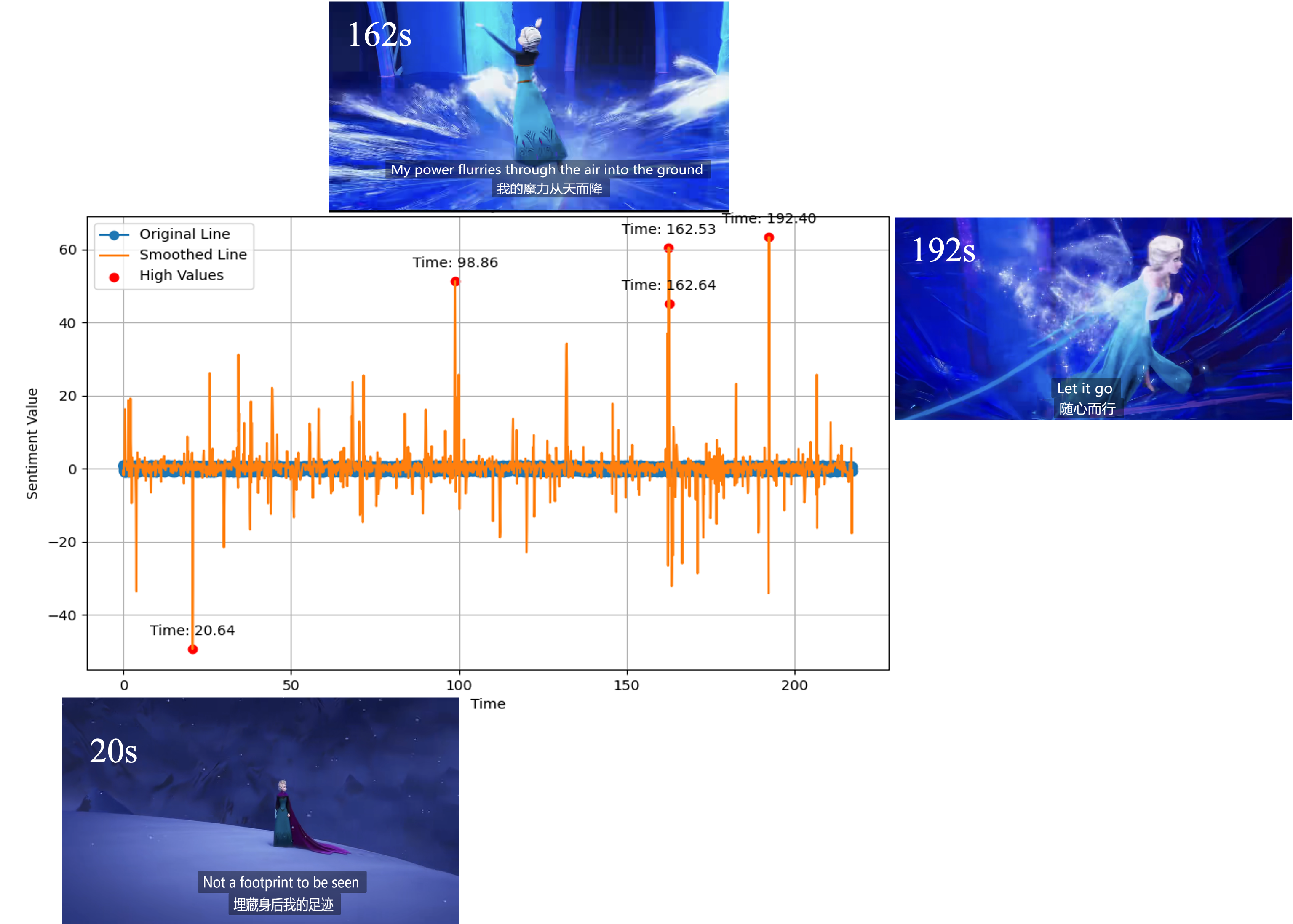Emotional Trejectories:
Danmaku (Real-time Comments) Vs. Physiological Signals
(In Progress)

Traditional comments on Youtube and Danmaku on Bilibili

Emotion curve: sentiment analysis of "Let It Go" Danmaku
Currently collecting physiological data from participants.
1. Danmaku originated in Japan and is now widely used on sites like Bilibili in China. Compared to asynchronous long comments on sites like YouTube, danmaku features live short texts. As texts are associated with specific timepoints, danmaku provides advantageous real-time feedback for analyzing content and user responses. Methods analyzing physiological signals have traditionally been considered one of the most precise ways to reflect emotional changes.
2. We are using the deep learning model SKEP for sentiment analysis to recognize and classify emotions within real-time comments in music videos, creating a dynamic trajectory reflecting collective responses of viewers. In parallel, we are implementing physiological experiments to capture electro-dermal activity (EDA) and electroencephalogram (EEG) signals from various subjects viewing identical videos and map the neurological emotional responses in specific time windows by focusing on specific features within alpha and theta wavebands.
3. We will perform comparative analysis between emotional curves derived from sentiment analysis and from physiological experiments to explore if real-time comments can predict human emotional trajectories to multimedia content in a manner similar to physiological signals.